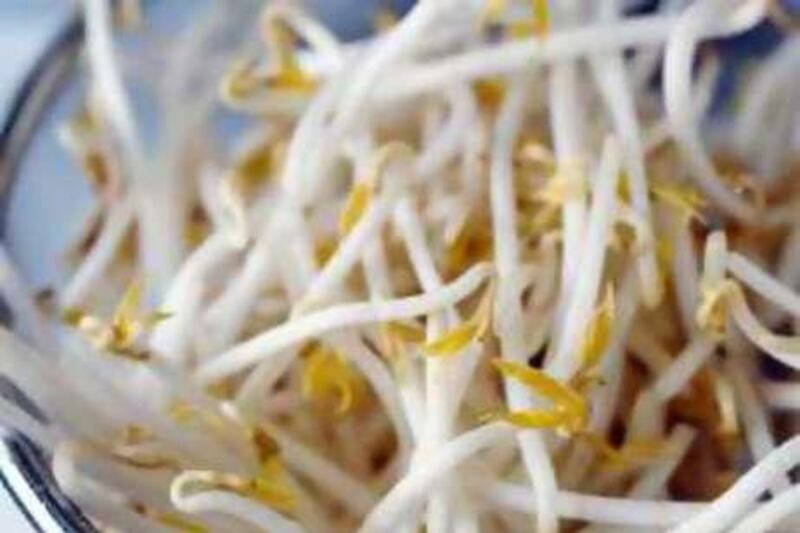Think stir fry, think bean sprouts. The ubiquitous Chinese dish wouldn't seem complete without them. But bean sprouts have gained popularity beyond the wok because of their apparent health benefits. Bean sprouts, as we have come to know them, are the shoots from small green legumes called mung beans. Mung beans are used widely in Indian Ayurvedic cookery because they are believed to be tridoshic, or able to balance all three bodily doshas of Vata, Pitta and Kapha.
But doshas aside, mung beans - and bean sprouts in particular - are known to be high in nutritional value, easy to digest and low in calories. More recently, people in the West have scattered raw bean sprouts onto salads and sandwiches due to their high levels of protein, vitamin C and folic acid. Indeed, the Chinese, who have used bean sprouts for over three millennia, have long known about the health benefits of bean sprouts. They are thought to ward off skin diseases and muscle aches, and are regarded as a yin food, calm and cooling.
All across China, and indeed the rest of South East Asia, bean sprouts have been traditionally added to spring onions, garlic, ginger and coriander as a stir fried accompaniment to meat dishes. In Vietnam they are used raw as a main ingredient in spring rolls, which have a fresher flavour and crunchier texture than cooked Chinese spring rolls. Bean sprouts are used widely in Korean food, often as a banchan, or side dish. Sometimes they are pickled like cabbage as a variety of kimchi, but they are also partially cooked in boiling water, flavoured with sesame oil, soy sauce, pepper and garlic and made into an appetiser called sukju-namul.
The trick to cooking bean sprouts is not to overcook them - hence the tried and trusted stir-fry method. Overcooked bean sprouts will be soggy, lifeless and, above all, tasteless, so no more than 30 seconds in a very hot pan is necessary. They should be pert, slightly crisp to the bite, and rife with sweet and savoury flavours. Raw bean sprouts are beautifully fresh, crunchy, sweet and just as appealing on the palate. They retain all their nutrients, but in some rare cases can fall prey to the salmonella bug. If in doubt, high risk groups such as children and senior citizens should steer clear, while everybody else should make sure they have been well refrigerated and are still super fresh.
One way to make sure of that is to sprout your own. Soak a batch of mung beans in a large glass jar of water overnight. Drain thoroughly the next morning and wrap them up in a kitchen-towel package tied at the top with string. Place the package in the dry jar, cover and leave to sprout in a warm place for a further 24 hours. If you want them to grow longer, re-rinse, re-package and repeat the process until they reach the required size.
Now, time to think about that stir fry again.
jbrennan@thenational.ae





